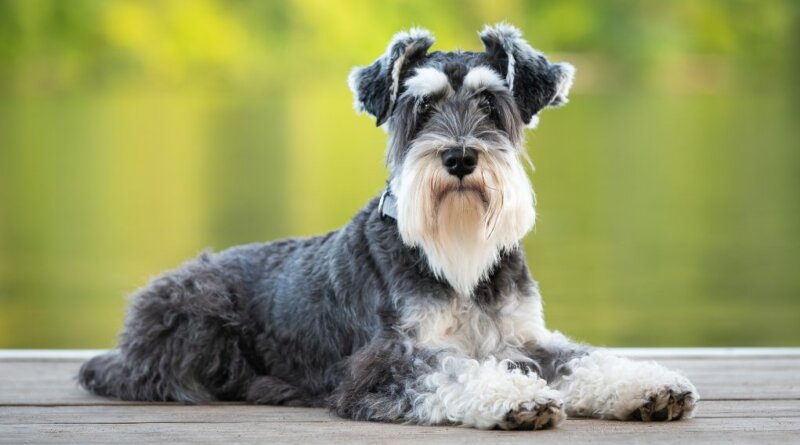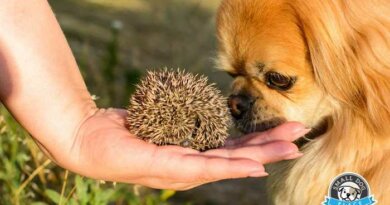Miniature Schnauzer Dog Breed Profile
Are you interested in getting yourself a dog? Have you thought of which breed you are getting yet? If not, then the Miniature Schnauzer is the breed you are ought to know.
They are intellectual, cordial, and comical. These dogs will make you laugh with their spunky but whacky personality.
If you are interested to know more about this breed, check out what we have for you. It tackles everything you need to know about them, from history to personality, health, and grooming.
All you need to do is to scroll down and read the article below.
Miniature Schnauzer History
Historically, Miniature Schnauzers served as guard dogs. They were also rat chasers.
In the mid-to-late 19th century in Germany, they were developed by crossbreeding the Standard Schnauzer with smaller breeds. Rumors have it that these smaller breeds include Miniature Pinscher, Affenpinscher, Poodle, and Pomeranian.
Furthermore, although Miniature Schnauzer is already hard to pronounce, this breed is called Zwergschnauzer at first. It meant the words “short” and “mustache” combined.
On the other hand, Findel was the first Miniature Schnauzer ever recorded. Aside from its name, we also know that she was born in October 1888 with a shiny black coat.
Eventually, World War II came. Aside from humans, certain dog breeds were also on the verge of extinction.
However, following World War II, interest in Miniature Schnauzers skyrocketed. As a result, the breed’s popularity has never dwindled since.
Miniature Schnauzer Temperament
If you’re the type of person who has always been the life of the party, a Miniature Schnauzer is the one for you.
This breed loves to be the center of attention. They are an extrovert; thus, they always love to be in the thick of family action.
Aside from being an extrovert, they can be pretty touchy and clingy too.
They may either throw their paws around you to urge you to play with them or scratch their claws at something to get you to hug them.
On the other hand, the Miniature Schnauzer is a ball of spitfire. They are a terrier, which means they’re full of themselves.
This breed is quite aggressive too, and their work involves amusing themselves.
In contrast, this breed is exceptionally brilliant, which makes them easy to train. However, some of these dogs have mastered the art of manipulation.
Furthermore, they can be stubborn at times. They will keep you walking or running on your toes.
As with every dog, the Miniature Schnauzer needs early socialization. Exposure to different stimuli such as people, sights, and sounds, help them to be well-rounded dog.
Miniature Schnauzer Appearance
Generally, Schnauzers are one of the most easily recognized breeds on the globe.
The classic look of this breed has a square body clothed in a dense salt and pepper or pure black coat. Besides that, this breed also has arched brows above their dark brown eyes, a bristly mustache, trimmed or natural ears, and an upright docked tail.
However, Miniature Schnauzers don’t disappoint too. This breed has its traditional boxy body form, covered in a medium-to-long wire-haired coat.
Furthermore, their skulls and snouts are squarish, with their ears that naturally fold just above the top of the head.
Unfortunately, the latter gets typically trimmed in dog shows so that the Schnauzer can stand out and get good points.
On the other hand, a Schnauzer’s coat grows fast. As a result, it naturally generates a shabby and wiry look on the breed’s coat.
Furthermore, it has several coat colors and patterns.
Solid-colored Schnauzers are the offspring of both solid-colored Schnauzers. There are three solid colors, black, liver, and white.
On the other hand, regular patterned Schnauzers exist as well. And there are three varieties of them: salt-pepper, liver-pepper, and black-silver.
Subsequently, Miniature Schnauzers has unique irregular patterns, which are commonly called particolored. Particolored dogs are so special that no two pups are alike.
In Miniature Schnauzers, the third pattern consists of a white coat with black, silver, or chocolate overlay. If an overlay covers from head to tail, it is called “blanket particolored.”
Sometimes we also encounter a rare combination of regular and irregular patterns of Miniature Schnauzers.
Occasionally, most Miniature Schnauzers fade in color as they grow older. However, it’s not because of their coat color but because something in their gene makes their color fade.
Miniature Schnauzer Grooming
Generally, most people send their Miniature Schnauzers to professional groomers to achieve their sleek, clean look. However, there are several techniques to obtaining it.
Although you can learn these techniques yourself, you must prepare for less-than-perfect results.
On the other hand, Miniature Schnauzers needs grooming every five to eight weeks. Furthermore, it would help to brush them at least twice or thrice a week to keep their coat from matting.
Matting usually happens across their chest and legs, especially their armpits. It might also occur on their face, particularly on their beard, every after they eat.
Besides that, it could also be a good idea to brush their teeth at least twice a week. This procedure will help them eliminate the tartar and germs living inside their mouth.
Furthermore, brushing their teeth alone would prevent them from having foul breath or gum disease.
In addition to that, you must also trim your Miniature Schnauzer’s nails at least once or twice a month. Doing so will prevent your dog from breaking or tearing its nail.
However, if you’re not used to cutting canine nails, get advice from a doctor or groomer.
On top of that, you must do a weekly ear examination as well. If your Miniature Schnauzer is suffering from ear redness or foulness, then I suspect that they have an ear infection.
Use a cotton ball soaked with a mild, pH-balanced ear cleaner to clean your dog’s ears.
Skin infections are also common in Miniature Schnauzers. Check for redness, soreness, or inflammation on their skin, especially around their eyes, nose, mouth, ears, and feet.
If you spot one, or a couple of them, you must immediately check with your veterinarian and ask them what to do.
Miniature Schnauzer’s Care
As mentioned above, Miniature Schnauzers are quite a handful. They are clingy creatures; thus, they love to be a part of everything you do, especially in significant circumstances or two.
As a result, they will likely spend most of their time following you all day from one room to another. However, they don’t mind getting left alone too.
But to avoid unforeseen accidents or worst injuries, crate training them will be more than helpful. It will also help them get used to confinement if they board a vehicle or get hospitalized.
However, never confine your dog to a crate all day. It’s not a jail, and they shouldn’t stay in it for more than a few hours at a time unless they’re sleeping at night.
On average, a Miniature Schnauzer has to have 45 minutes of activity every day. Thus, they will spend most of their day running and playing with their toys.
They also enjoy having a yard to play. But they will do fine without one if you take them for a long walk by the end of the day.
Miniature Schnauzer’s Health
Miniature Schnauzers are typically healthy, but like other breeds, they are susceptible to some health issues.
Although not all Miniature Schnauzers will get all of these illnesses, it’s vital to be aware of them if you’re thinking about getting this particular breed.
1. Myotonia Congenita
Myotonia Congenita is a skeletomuscular genetic disease related to muscular dystrophy. It’s a disease recently found in Miniature Schnauzers, and its symptoms appear when puppies are just a few weeks old.
Once developed, its primary symptom includes a swollen and stiff tongue. As a result, your Miniature Schnauzer will struggle to swallow.
However, other symptoms can also be trouble getting up, stiffing coat, and bunny-hopping.
Myotonia treatment comprises taking the following medicines or membrane stabilizers: quinidine, mexiletine, and procainamide.
2. Urinary Stones
The most prevalent illness occurring on Miniature Schnauzer is urinary stones.
Urinary stones are a combination of mineral crystals in urine and calcium oxalate ions that may develop in their urinary bladder. It causes blockage of the urine flow that needs emergency treatment.
Its primary symptoms include abdominal discomfort and the presence of blood in their urine. But other symptoms are also present depending on the dog’s case and how its urinary system function.
According to the Veterinary Manual, calcium oxalate stones are difficult to prevent as the cause of these stones is unknown.
There are three options available for treating bladder stones.
One of the first options is surgery, or most likely known as cystotomy. This surgical technique opens the bladder to allow stone removal.
Many veterinarians do this procedure regularly, and dogs typically recover quickly after that.
On the other hand, Urohydropropulsion is a non-surgical removal method. In this procedure, they insert a special catheter into the bladder, which will help flush out the stones.
However, if your veterinarian has a cystoscope, they can also use it to remove the stones. In this case, it’s called cystoscopy.
Aside from treating your Miniature Schnauzer, these non-surgical techniques also help in collecting samples for additional examinations. Furthermore, it allows your veterinarians to check if there are any other underlying conditions.
In certain situations, one can make dietary modifications to their dog’s meals. It cannot remove existing stones; however, it can help prevent new ones from developing.
3. Von Willebrand’s Disease
Platelets are tiny blood cells that function by forming blood clots in wounded body regions.
However, when one inherits a Von Willebrand Disease, the tendency to form blood clots is almost close to impossible.
Thus, if a Miniature Schnauzer has the said disease, they will have difficulty treating their injuries.
Besides, onset nose bleeds and blood in the feces and urine are possible symptoms of Von Willebrand’s Disease.
Unfortunately, this condition is a genetic disease that has an unknown cure and prevention. However, its symptoms will unlikely come back if managed or intervented appropriately.
4. Congenital Megaesophagus
The Congenital Megaesophagus is a developmental illness in dogs wherein they lack muscles in their esophagus, resulting in swallowing difficulties.
Since they have a weak esophagus, it frequently leads to frequent regurgitation, especially when eating heavy solid foods. As a result, most dogs suffering from Congenital Megaesophagus have inadequate nutrition in the dog’s body.
Most of the time, puppies grow out of this condition, particularly during 6 to 12 months of age. About 20% to 40%, Miniature Schnauzers experience this too.
Unfortunately, some dogs won’t outgrow this condition since it depends on their case and other underlying conditions.
5. Progressive Retinal Atrophy (PRA)
Progressive Retinal Atrophy (PRA) is a hereditary eye disorder in dogs characterized by the progressive degeneration of their retinas, resulting in total blindness.
Night blindness is the most common symptom of PRA in dogs. In this symptom, affected dogs tend to be anxious at night because they are hesitant to enter and walk in dark places.
It is primarily due to their possibility of tripping on objects they may not see or notice.
Unfortunately, no treatment exists for PRA. However, there are several preventions available for this disease, such as antioxidant supplements or vitamins.
Although it has no noticeable effect on this illness, it may minimize stress on the lens cells and postpone the onset of cataracts.
If a disease like cataracts or retinal detachment has been identified as the cause of your dog’s blindness, treating the underlying cause may prevent future vision loss.
Final Thought About Miniature Schnauzer
When it comes to owning a Miniature Schnauzer, there are several aspects to consider.
Aside from the added duty of dog ownership, it’s essential to consider the compatibility of your lifestyle, personality, temperament, and general disposition with them.
A Miniature Schnauzer may make an excellent family dog if you are ready to put in the work.
Besides Miniature Schnauzers having a great personality, they are also an intelligent dog breed. Thus, making them effortless to train.
However, this breed can be difficult sometimes. Miniature Schnauzers can be extremely stubborn and independent.
Thus, it would be best if you ready yourself with occasional tantrums.
Bear in mind that it’s okay not to own a Miniature Schnauzer. Nonetheless, it would be best to consider other breeds that perfectly fit you and your lifestyle.
NEXT READ: American Staffordshire Terrier Breed Profile
Related
















